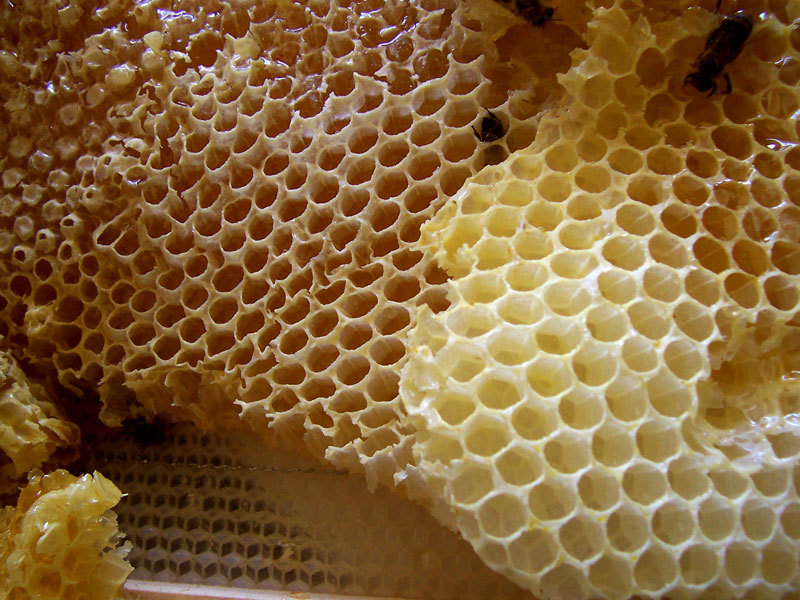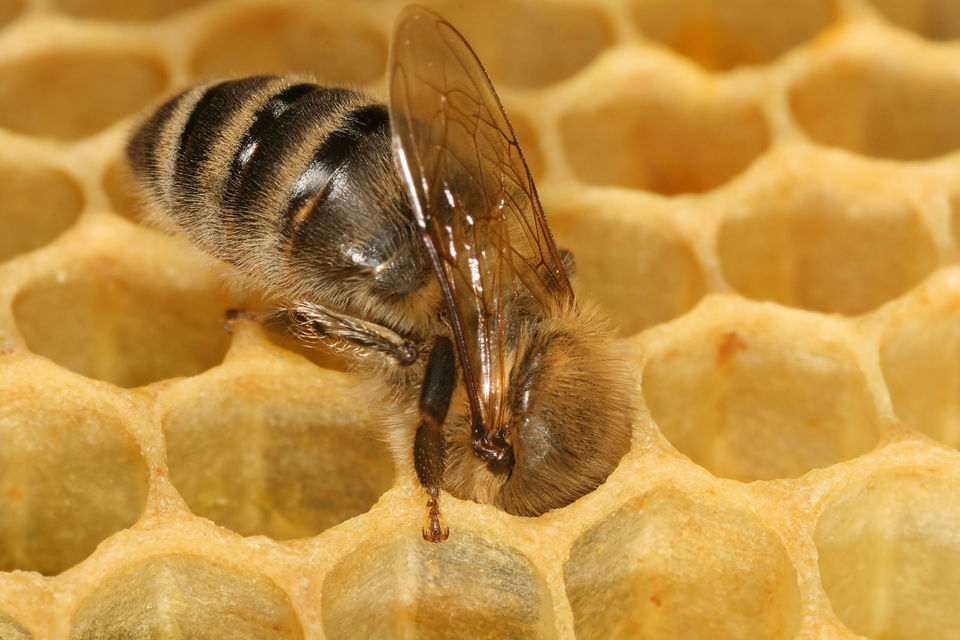In this image we see the classic hexagonal honeycomb structure of the enlightened honeybee. The hexagonal structure is common to the nesting architecture many related insects, including wasps, et cetera. Note that the strength of the comb is improved not only by the superior hexagonal geometry, but also by the skillful employment of rhombic facets at the closed end of the cells.
"In 1965, László Fejes Tóth discovered that the trihedral pyramidal shape (which is composed of three rhombi) used by the honeybee is not the theoretically optimal three-dimensional geometry. A cell end composed of two hexagons and two smaller rhombuses would actually be .035% (or approximately 1 part per 2850) more efficient."
First image by Merdal. Second image by Makro Freak. Both are licensed under the Creative Commons Attribution ShareAlike 2.5 Generic license.
 Honeycomb
Honeycomb

The axes of honeycomb cells are always quasi-horizontal, and the non-angled rows of honeycomb cells are always horizontally (not vertically) aligned. Thus, each cell has two vertical walls, with "floors" and "ceilings" composed of two angled walls. The cells slope slightly upwards, between 9 and 14 degrees, towards the open ends.
There are two possible explanations for the reason that honeycomb is composed of hexagons, rather than any other shape. One, given by Jan Broek, is that the hexagon tiles the plane with minimal surface area. Thus a hexagonal structure uses the least material to create a lattice of cells within a given volume. Another, given by D'Arcy Wentworth Thompson, is that the shape simply results from the process of individual bees putting cells together: somewhat analogous to the boundary shapes created in a field of soap bubbles. In support of this he notes that queen cells, which are constructed singly, are irregular and lumpy with no apparent attempt at efficiency. Its amazing how such a small creatures have such a difficult and smart technique )
To visualize Fejes Tóth's cell is a very difficult task. The better thing is constructs one net of cardboard of the following way: To imagine two straight pyramids of square base joined by the mentioned base. The lateral faces are eight triangles isosceles of equal base that height. To cut the above mentioned triangles to the half of the height, parallel to his base. Four equal trapezes stay for every pyramid. We cut the tops of the base of the trapezes to a fourth part of the above mentioned base and to the half of the height. Eight non regular hexagons stay with his opposites parallel sides that are the lateral faces of the solid one. Finally two squares of side construct half of the initial base more four rhombuses that close the cuts in the previous tops. The diagonals of the above mentioned rhombuses are in ratio square root of three means, with the major one parallel at a height of the pyramids. Fejes Tóth's cell corresponds at side view of the solid once stuck all the pieces. The solid one we it turn now ninety degrees in order that the view before mentioned is the top view. The profile of the contour, now observed by the top view, is exactly a regular hexagon of side that of the lateral square.